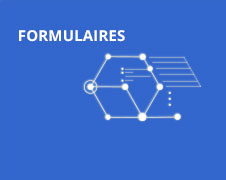Andrés Finzi
Virologie, VIH-1, entrée rétrovirale, anticorps neutralisants
- Professeur titulaire
-
Faculté de médecine - Département de microbiologie, infectiologie et immunologie
Médias
Cérémonie Bravo à nos chercheurs - 6 mai 2015
© Université de Montréal
Portrait
Expertise de recherche
Étude des changements conformationnels des glycoprotéines d'enveloppe du VIH-1
La prévention de la transmision du VIH exige des approches qui interrompent la phase précoce d’infection par ce rétrovirus. Un événement de cette phase est l’entrée du VIH dans les cellules cibles, ce qui implique des intéractions entre les glycoprotéines de l’enveloppe (gp120-gp41) et le récepteur CD4 ainsi que les corécepteurs CCR5 ou CXCR4. Pour interrompre l’entrée virale, on doit d’abord comprendre les changements conformationnels et structurels qui permettent aux glycoprotéines de l’enveloppe du VIH d’intéragir avec ces récepteurs afin de fusionner avec les cellules hôtes. Mes travaux ont pour but de développer une nouvelle classe d’inhibiteurs de l’entrée du VIH ainsi que la conception de meilleurs immunogènes du VIH qui pourraient ouvrir la voie au dévéloppement de vaccins efficaces contre le VIH ainsi que des meilleures options de traitement.
Biographie
Le Dr Finzi a fait ses études graduées à l’Université de Montréal. Il poursuit ses études postdoctorales en virologie dans le laboratoire du Dr Joseph Sodroski au Dana-Farber Cancer Institute (Harvard Medical School) où il identifie des éléments structurels clés au sein des glycoprotéines de l’enveloppe du VIH-1, essentiels à l’entrée du virus. Cette découverte lui a valu la prestigieuse bourse Mathilde Krim, octroyée par l’American Society for AIDS Research (amfAR). Le Dr Finzi entame une carrière académique au département de microbiologie, infectiologie et immunologie à l’Université de Montréal en septembre 2011 et obtient des fonds de la fondation Bill et Melinda Gates ainsi que de la Fondation Canadienne pour l’Innovation (FCI), des Instituts de Recherche en Santé du Canada (IRSC) ainsi qu’une bourse salariale du Fonds en Recherche Québec Santé (FRQS). Depuis 2014 le Dr Finzi est récipiendaire d’une Chaire de Recherche du Canada en entrée rétrovirale. Le Dr Finzi a publié ses travaux dans des prestigieuses revues internationales incluant Science, Molecular Cell, PNAS, Nature Chemical Biology, PlosPathogens, Journal of Virology. Le Dr Finzi siège sur de nombreux comités de paires au niveau national et international.
Prix et distinctions
- Lauréat du prix Joe-Doupe 2019
- Membre du Collège de nouveaux chercheurs et créateurs en art et en science de la Société royale du Canada - 2020
Formation
- 2007 — Études postdoctorales — Virologie — Dana-Farber Cancer Institute / Harvard Medical School
- 2007 — Doctorat — Virologie — Université de Montréal
Pour en savoir plus…
- 10-04-2019 Une nouvelle technique d’imagerie révèle des vulnérabilités inédites du VIH
- 10-04-2019 Attaquer le VIH à coups d'ouvre-boîte
- 11-04-2019 Des faiblesses du VIH révélées
- 26-03-2020 La course contre la montre pour la mise au point d’un vaccin
- 09-04-2020 Mise sur pied d’un programme extraordinaire d’immunisation passive par plasma
- 09-06-2020 La quantité d’anticorps capables de neutraliser le virus diminue après six semaines
- 08-09-2020 Deux professeurs sont nommés au Collège de nouveaux chercheurs de la SRC
- 20-10-2020 COVID-19: tous les anticorps ne sont pas égaux devant le virus
- 19-11-2020 COVID-19: 3 M$ pour des installations de recherche à l’UdeM
- 20-05-2020 Un cocktail inédit pour freiner le VIH
Affiliations et responsabilités
Affiliations de recherche
Enseignement et encadrement
Enseignement
Cours siglés (session en cours uniquement)
Programmes
Encadrement
Thèses et mémoires dirigés (dépôt institutionnel Papyrus)
Exposer des points de vulnérabilité des glycoprotéines d’enveloppe du VIH-1 pour éliminer les cellules infectées
Cycle : Doctorat
Diplôme obtenu : Ph. D.
Étude du rôle de la conformation des glycoprotéines de l'enveloppe du VIH-1 dans la réponse cytotoxique cellulaire dépendante des anticorps
Cycle : Doctorat
Diplôme obtenu : Ph. D.
Impact du petit inhibiteur temsavir sur la conformation des glycoprotéines d’enveloppe du VIH-1
Cycle : Maîtrise
Diplôme obtenu : M. Sc.
Stabilité et fonctionnalité des glycoprotéines de l’enveloppe du VIH-1 recombinant CRF01_AE : rôle de l’histidine en position 375
Cycle : Maîtrise
Diplôme obtenu : M. Sc.
Étude du rôle des régions variables 4 et 5 dans les changements de conformation de la gp120 du VIH-1
Cycle : Maîtrise
Diplôme obtenu : M. Sc.
Rôle de la conformation des glycoprotéines de l’enveloppe du VIH-1 dans la réponse cytotoxique cellulaire dépendante des anticorps et impact des protéines virales Nef et Vpu
Cycle : Doctorat
Diplôme obtenu : Ph. D.
Étude des immunoglobulines G dirigées contre l’enveloppe du VIH-1 dans des spécimens vaginaux et sanguins de travailleuses du sexe béninoises
Cycle : Maîtrise
Diplôme obtenu : M. Sc.
Projets
Projets de recherche
Immunovirological determinants of breakthrough COVID-19 disease in vaccinated or previously infected individuals
SARS-CoV-2 Spike conformation: impact on Fc-mediated effector functions
Single-cell approaches to characterize and target the cellular reservoirs of HIV infection
Impact of Temsavir on HIV-1 Env conformation and soluble gp120-associated immune dysfunction
Closing the Comorbidity Gap for People Living with HIV : a Randomized Controlled Trial of Fostemsavir to Reduce Inflammaging
Etude de la réponse humorale chez des donneurs vaccinés contre le SRAS-CoV-2 puis infectés par des variants préoccupants
COVIH study: COVID-19 burden in HIV infected individuals
Chaire de recherche du Canada en Retroviral Entry
Unlocking HIV-1 Env Towards a Cure
Study IFITM restriction of HIV-1 entry: cross-talk with adaptive immunity.
Caractérisation de la réponse humorale chez des donneurs vaccinés contre le SRAS-CoV-2 puis infectés par des variants préoccupants
COVID-19 Variant Network Innovative therapeutique approaches for the 19 novel
COVID-19 Variant Supplement - Early immune predictors of sustained SARS-CoV-2 antibody responses after COVID-19 disease
Early immune predictors of sustained SARS-CoV-2 antibody responses after COVID-19 disease
Studying HIV-1 Env conformational changes : a structural/functional approach to eliminate HIV-1-infected cells
Booster dose of mRNA SARS-CoV-2 vaccine versus non mRNA vaccine for people living with systemic autoimmune rheumatic diseases without adequate humoral response post standard mRNA vaccination.
Caractérisation de l’immunité humorale développée par les personnes guéries de la COVID-19
Unlocking Env: a new strategy for a functional cure through antibody-dependent cell-mediated cytotoxicity
Caractérisation des réponses B et T spécifiques au virus SARS-CoV-2
USD - Harnessing NK cell responses to eliminate HIV-1 infected cells
CHAIRE DE RECHERCHE DU CANADA - RETROVIRAL ENTRY - MALADIES INFECTIEUSES ET PARASITAIRES
Reducing viral reservoirs by opening HIV-1 Env to antibody attack
Uncovering HIV-1-infected cells: a new path towards a cure
CHTD Development and testing of multivalent HIV entry inhibitor antibody formulation NRC IRAP
Novel HIV-1 Env trimer probes for efficient isolation of broadly neutralizing antibodies
SIDAMI - Harnessing ADCC responses to eliminate HIV-1 infected cells
Conformational changes of HIV-1 envelope induced by CD4: a new mechanism governing sensitivity to ADCC
Description
In the absence of treatment, human immunodeficiency virus (HIV) causes acquired immunodeficiency syndrome (AIDS), which has already killed more than 34 million people worldwide. To be able to spread, HIV needs first to enter human cells. To do so, HIV has developed a unique key (envelope glycoproteins, gp120 and gp41) that recognizes a particular lock (receptor CD4 and coreceptors CCR5 or CXCR4) in human cells (mainly lymphocytes T CD4 and macrophages). This key needs to move into the lock (conformational changes of gp120 and gp41) to allow viral entry. In the absence of no effective vaccines against HIV and with therapies aimed at HIV eradication remaining a far fetched goal, new ways to fight HIV infection are warranted. Our preliminary results indicate that antibodies recognizing this key in presence of the receptor CD4 are able to recruit cells from the immune system to eliminate HIV-1-infected cells through a mechanism known as Antibody-Dependent Cell-Mediated Cytotoxicity (ADCC). However, little is known about how this happens and how the virus tries to evade from this response. This proposal will advance our understanding of what could be a critical mechanism required for elimination of HIV-1-infected cells and has the potential to develop new inhibitors or immunogens against the key of HIV.
Conformational changes of the HIV-1 envelope glycoproteins: a structural/functional approach to understand the transition to the CD4-bound conformation and identify new therapeutic targets
Allocation de recherche
CONFORMATIONAL CHANGES OF HIV-1 ENVELOPE INDUCED BY CD4: A NEW MECHANISM GOVERNING SENSITIVITY TO ADCC
CONFORMATIONAL CHANGES OF THE HIV-1 ENVELOPE GLYCOPROTEINS : A STRUCTURAL/FUNCTIONAL APPROACH TO UNDERSTAND THE TRANSITION TO THE CD4-BOUND CONFORMATION AND IDENTIFY NEW THERAPEUTIC TARGETS
Projets pilotes du continuum (CRCHUM)
IDENTIFICATION OF NATURALLY-OCCURING ANTI-HIV-1 NEUTRALIZING MOLECULES FROM A COHORT OF HIGHLY-HIV-1-EXPOSED SERONEGATIVE INDIVIDUALS
CHANGEMENTS CONFORMATIONELS DES GLYCOPROTEINES DE L'ENVELOPPE DU VIH-1 : UNE APPROCHE STRUCTURELLE/FONCTIONNELLE POUR COMPRENDRE LA TRANSITION VERS LA FORME LIEE A CD4 ET L'IDENTIFICATION DES NOUVELLES CIBLES THERAPEUTIQUES (FON
Identification of Naturally-Occurring anti-HIV-1 Neutralizing Molecules from a Cohort of Highly-HIV-1-Exposed Seronegative Individuals
Description
Worldwide, it is estimated that 34 million people live with human immunodeficiency virus (HIV). In 2010 alone around 2.7 million became newly infected with HIV and 1,8 million died from AIDS. In Canada, it is estimated that 65,000 people are living with HIV/AIDS and thousands are newly infected every year. In the absence of effective vaccines against HIV and with therapies aimed at HIV eradication remaining a far-fetched goal, new approaches to fight HIV infection are warranted. Perhaps new strategies to fight HIV-1 infection could be learned from a group of individuals that remain HIV-1-negative despite being highly exposed to HIV-1. So far it is still not fully understood how these individuals, referred as Highly Exposed to HIV-1 but Persistently Seronegative (HEPS), succeed to avoid HIV-1 transmission. Understanding the basis of their HIV-1 resistance and identifying and characterizing potential anti-HIV-1 molecules, including broadly neutralizing antibodies, from these healthy HIV-1-uninfected-individuals might help direct efforts in next-generation anti-HIV-1 entry inhibitors, vaccine and microbicides design.
CHANGEMENTS CONFORMATIONELS DES GLYCOPROTEINES DE L'ENVELOPPE DU VIH-1 : UNE APPROCHE STRUCTURELLE/FONCTIONNELLE POUR COMPRENDRE LA TRANSITION VERS LA FORME LIEE A CD4 ET L'IDENTIFICATION DES NOUVELLES CIBLES THERAPEUTIQUES
CONFORMATIONAL CHANGES OF THE HIV-1 ENVELOPE GLYCOPROTEINS : A STRUCTURAL APPROACH TO UNDERSTANDING ANTIBODY ESCAPE AND IDENTIFYING NEW THERAPEUTIC TARGETS TO BLOCK VIRAL ENTRY
CONFORMATIONAL CHANGES OF THE HIV-1 ENVELOPE GLYCOPROTEINS : A STRUCTURAL APPROACH TO UNDERSTANDING ANTIBODY ESCAPE AND IDENTIFYING NEW THERAPEUTIC TARGETS TO BLOCK VIRAL ENTRY
CONFORMATIONAL CHANGES OF THE HIV-1 ENVELOPE GLYCOPROTEINS: A STRUCTURAL APPROACH TO UNDERSTANDING ANTIBODY ESCAPE AND IDENTIFYING NEW THERAPEUTIC TARGETS TO BLOCK VIRAL ENTRY
REVERSE FUSION: A NEW APPROACH TO ERADICATE HIV/AIDS
Rayonnement
Publications et communications
Publications
- Veillette M, Désormeaux A, Medjahed H, Gharsallah N, Coutu M, Baalwa J, Guan Y, Lewis G, Ferrari G, Hahn B, Haynes B, Robinson J, Kaufmann D, Bonsignori M, Sodroski J and Finzi A. Interaction with Cellular CD4 Exposes HIV-1 Envelope Epitopes Targeted by Antibody-Dependent Cell-Mediated Cytotoxicity. Journal of Virology. 2014. 88(5):2633-44.
- Richard J., Veillette M., Brassard N., Iyer SS., Roger M., Martin L., Pazgier M., Schön A., Freire E., Routy JP., Smith III AB., Park J., Jones DM., Courter JR., Melillo BN., Kaufmann DE., Hahn BH., Permar S., Haynes B, Madani N., Sodroski J., and Finzi A. CD4 Mimetics Sensitize HIV-1-Infected Cells to ADCC. 2015. PNAS. 19;112(20):E2687-94.
- Richard J., Pacheco B., Gohain N., Veillette M., Ding S., Alsahafi N., Tolbert WD., Prévost J., Chapleau JP., Coutu M., Jia M., Brassard N., Park J., Courter JR., Melillo B., Martin L., Tremblay C., Hahn BH., Kaufmann DE., Wu X., Smith III AB., Sodroski J., Pazgier M. and Finzi A. Co-receptor binding site antibodies enable CD4-mimetics to expose conserved anti-cluster A ADCC epitopes on HIV-1 envelope glycoproteins. EBioMedicine. 2016. 12:208-218.
- Prévost J., Zoubchenok D., Richard J., Veillette M., Pacheco B., Coutu M., Brassard MS., Ruxrungtham K., Bunupuradah T., Tovanabutra S., Hwang KK., Moody AM., Haynes BF., Bonsignori M., Sodroski J., Kaufmann DE., Shaw GM., Chenine AL. and Finzi A. Influence of the Envelope Gp120 Phe 43 Cavity on HIV-1 Sensitivity to ADCC Responses. Journal of Virology. 2017. 91(7) e02452-16.
Disciplines
- Virologie
- Immunologie
Champ d’expertise
- SIDA / VIH
- Virus
- Enzymes et protéines
- Prévention en santé
- Maladies transmises sexuellement (Maladies infectieuses et immunitaires)
- Immunodéficiences
- Immunothérapie
- Développement de vaccins
- COVID-19
- COVID19
Aide en ligne pour votre profil | Nous joindre
Le Répertoire des professeurs est propulsé par les données du ![]() SADVR et est un projet du CENR.
SADVR et est un projet du CENR.


